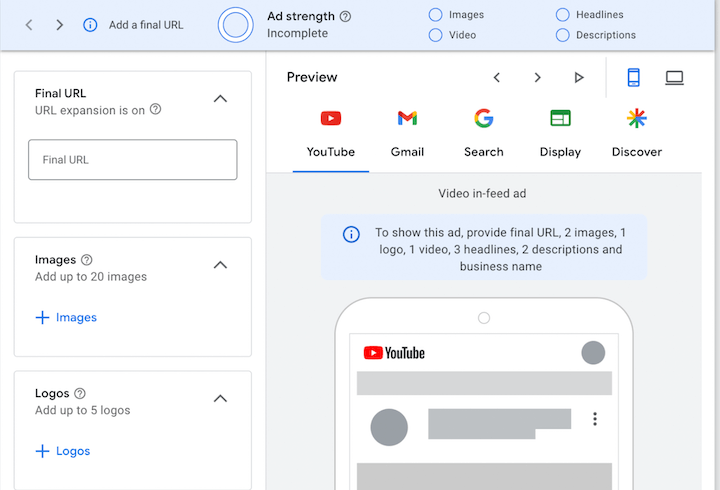* This article was originally published here
Step into the Internet Marketing Blog that reveals real strategies behind viral traffic, smart funnels, and sustainable online growth. Learn top SEO tactics, content hacks, and affiliate tools used by leading marketers. Stay ahead with trend insights, boost engagement, and turn ideas into action. Whether you're starting out or scaling up, this blog delivers nonstop value and inspiration. The roadmap to your breakthrough begins here — dive in now!
Internet Marketing Blog
Tuesday, January 31, 2023
Key employee navigated wellness checks to permanent remote ... - Times Union
* This article was originally published here
Monday, January 30, 2023
7 Ways to Optimize Your LinkedIn Ads for Peak Performance
LinkedIn has become the go-to resource for businesses looking to advertise to a specific targeted audience of professionals.
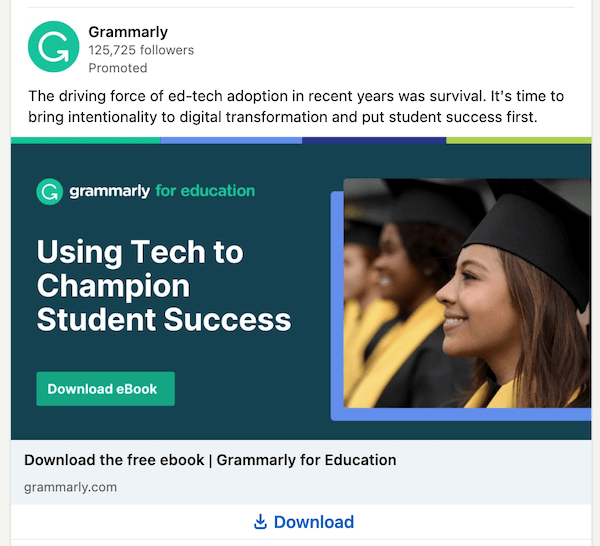
But as with any ad platform, you are paying to play, so you need to make sure you’re taking advantage of every feature, setting and strategy to get the most out of your budget. Lucky for you, that’s what I’ll be covering in today’s post.
Read on to learn why LinkedIn advertising is a top B2B strategy and how to optimize your campaigns to get the highest return on your investment.
Why should every B2B strategy include LinkedIn ads?
LinkedIn advertising is an effective platform for anyone looking to drive leads and sales. Before we get into the optimizations, let’s cover a few of the reasons why it’s so effective.
Reach a highly targeted audience
LinkedIn allows you to target your ads based on job title, company size, industry, location, interests, groups, company growth rate, and more.
This means that you can easily “hunt” for the right prospects that are most likely to be interested in your service or product. How could you pass on that!?
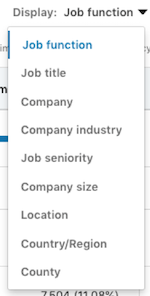
Boost brand awareness
Yes I know, PPC is geared toward getting actual leads and not just increasing brand awareness. But increased awareness is a great by-product of a well-targeted campaign.
LinkedIn is an extremely popular platform with a huge user base, making it an unmissable channel to reach a wider audience and boost brand awareness.
Generate leads
Well, this one is just stating the obvious.
LinkedIn ads are designed to drive traffic to your website or landing pages, which can help you generate leads and sales. LinkedIn also offers lead generation forms, which allow users to sign up for more information or download either a whitepaper or some other resource directly from the ad.
Keep in mind, lead gen forms will get you more leads, but at a lower intent than those who will actually sign up directly on your website.
Track results
Data is everything. LinkedIn provides invaluable analytics and tracking tools to help you measure the effectiveness of your ads.
You can track:
- How many people have seen your ad
- How many have clicked on it
- How many have taken a specific action, such as visiting your website or filling out a form.
While these are the basics of any advertising platform, with LinkedIn you can slice it by company size, job title, industry and other accurate targets that LinkedIn offers—which we will go through in this post!
Multiple ad formats
LinkedIn offers a variety of ad formats to choose from, including sponsored content, sponsored InMail, display ads, and sponsored job postings. This allows you to choose the format that best fits your business needs and goals, which depend on your product and target market.
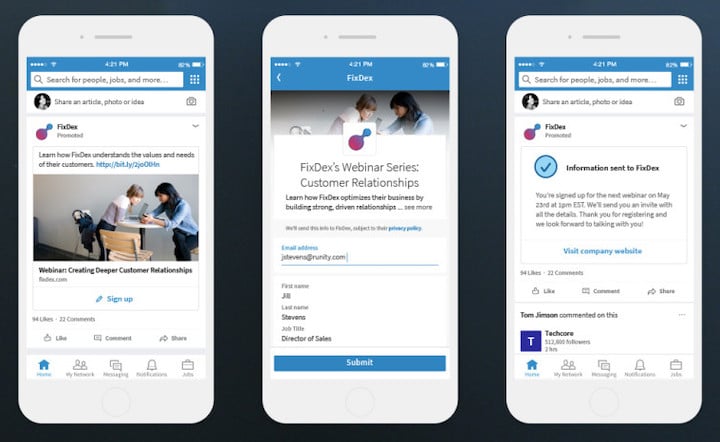
How to optimize your LinkedIn ads
Bottom line? LinkedIn’s targeting capabilities, brand awareness potential, lead generation forms, and analytics make it a valuable tool for any business looking to grow and succeed.
Well now that we have that settled, the question remains: How to make this advertising platform successful?
Here are seven bulletproof ways to hack your LinkedIn campaigns for success.
1. Define and regularly update your target audience
Having a target audience is crucial for creating ad content that resonates and drives conversions. Here are some steps to define your target audience:
- Identify your target market: Who is your product or service for? Consider factors such as age, gender, location, job title, and industry.
- Define your buyer personas: Create detailed profiles of your ideal customers, including their needs, goals, and challenges.
- Analyze your current customer base: Look at your current customer data to understand who is already using your product or service, why, and how.
- Consider your value proposition: What makes your product or service unique and valuable to your target audience? And what keeps them coming back?
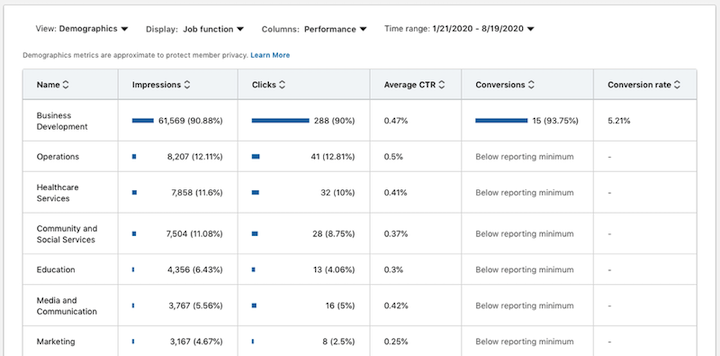
Don’t forget to regularly review and update your target audience to ensure that your ad campaigns stay relevant and effective.
2. Create great ads (and I mean really great ads)
LinkedIn is a crowded network, filled with recruiters, salespeople, and advertisers. So you’d better make sure you’ve got winning ads!
Your ads need to stand out for all the right reasons, or they just won’t cut it.
Use compelling headlines and visuals as an effective way to capture the attention of your target audience and improve the performance of your LinkedIn Ads.
Here are some tips for creating great ads:
- Use responsive design: Make sure your ad looks good on both desktop and mobile devices. LinkedIn offers responsive ad formats that automatically adjust to the size of your screen, so your ad will look great no matter how it’s viewed.
- Use eye-catching visuals: Visuals are an important part of any ad, and they are especially important on mobile where people are more likely to scroll quickly through their feed.
- Keep the ad copy short and to the point: Mobile users tend to have shorter attention spans, so use clear, concise language that gets your message across fast.
- Make sure the ad is easy to read: Use a clear, easy-to-read font and make sure there is enough contrast between the text and the background.
- Test your ad on different devices: Before you launch your ad, make sure to test it on a variety of mobile devices to ensure it’s readable and looks good.
Don’t forget to regularly review and optimize your headlines and visuals to make sure they’re effective at driving conversions.
Here’s a great example of an ad by Superlegal:

Why is this ad successful?
- Eye-catching visuals: The creative captures the user’s eye while quickly browsing through their feed.
- Concise copy: The messaging is to the point and keeps details on how it works to a minimum, generating interest. Less is more.
- Benefit-focused: The messaging immediately tells the user what’s in it for them, and focuses on the why, not the what.
3. Test, test, and then test some more
Testing different ad variations allows you to make data-driven decisions and optimize your LinkedIn ad performance. Here are some things to test:
- Ad copy: Try testing different versions of your ad copy to see which ones resonate most with your audience. You can test different headlines, descriptions, and calls to action to see which ones perform the best.
- Visuals: Try testing different visuals, such as images or videos, to see which ones are most effective. You can also experiment with different image sizes and aspect ratios to see which ones perform the best.
- Targeting: Test different targeting options, such as job titles, industries, or locations to see which ones perform the best for your business.
- Audience sizes: You can also test different audience sizes to see if targeting a smaller, more specific audience performs better than targeting a larger, more general audience.
- Ad format: LinkedIn offers a variety of ad formats, including sponsored content, sponsored InMail, display ads, and sponsored events. It’s important to test different formats to see which ones perform the best for your business.
Pro Tip: When launching a new campaign, make sure to set your campaign to rotate ads evenly to begin with, as this will give each ad a fair chance.
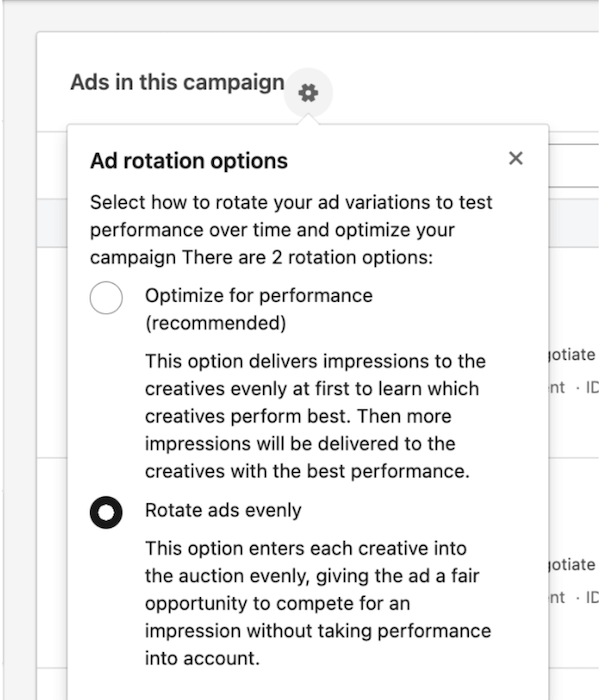
It’s important to regularly review and analyze the results of your ad variations to identify areas for improvement and don’t forget to keep optimizing your ads over time to maximize your chances.
4. Use LinkedIn’s targeting options
LinkedIn’s audience targeting options allow you to narrow down your audience and show your ads to specific groups of people on the platform. This can be an incredibly effective way to reach the right audience and improve the performance of your ads.
Here are some examples of LinkedIn’s audience targeting options:
- Company growth rate: This one is actually very interesting. You can target your campaign to be shown exclusively to prospects who work at companies with a positive growth rate. So, if you provide recruiting services, you’d want to target the companies with a (very) positive growth rate and exclude the ones with a negative growth rate.
- Job title: This one is probably the most basic targeting method on LinkedIn. Target specific job titles or job functions, such as marketing managers or sales executives. This can be especially useful if your product or service is only relevant to certain professions or job roles.
- Company size: You can target specific company sizes, such as small businesses or large enterprises. This can be useful if your product or service is more suited to a particular size of company.
- Industry: You can target specific industries, such as finance or healthcare. This can be useful if your product or service is specifically relevant to a particular industry for example insurance or tech.
- Location: You can target specific locations, such as a specific city or country. This is useful for those whose product or service is available only in certain areas or if you are trying to reach a local audience.
- Group: Target prospects who are members of specific groups on LinkedIn. This is a great one if you know your target audience is likely to have specific interests, passions, and hobbies.
Pro Tip: Make sure to always disable the LinkedIn audience expansion from your campaigns. It will show your ads to a mostly irrelevant audience in most cases.
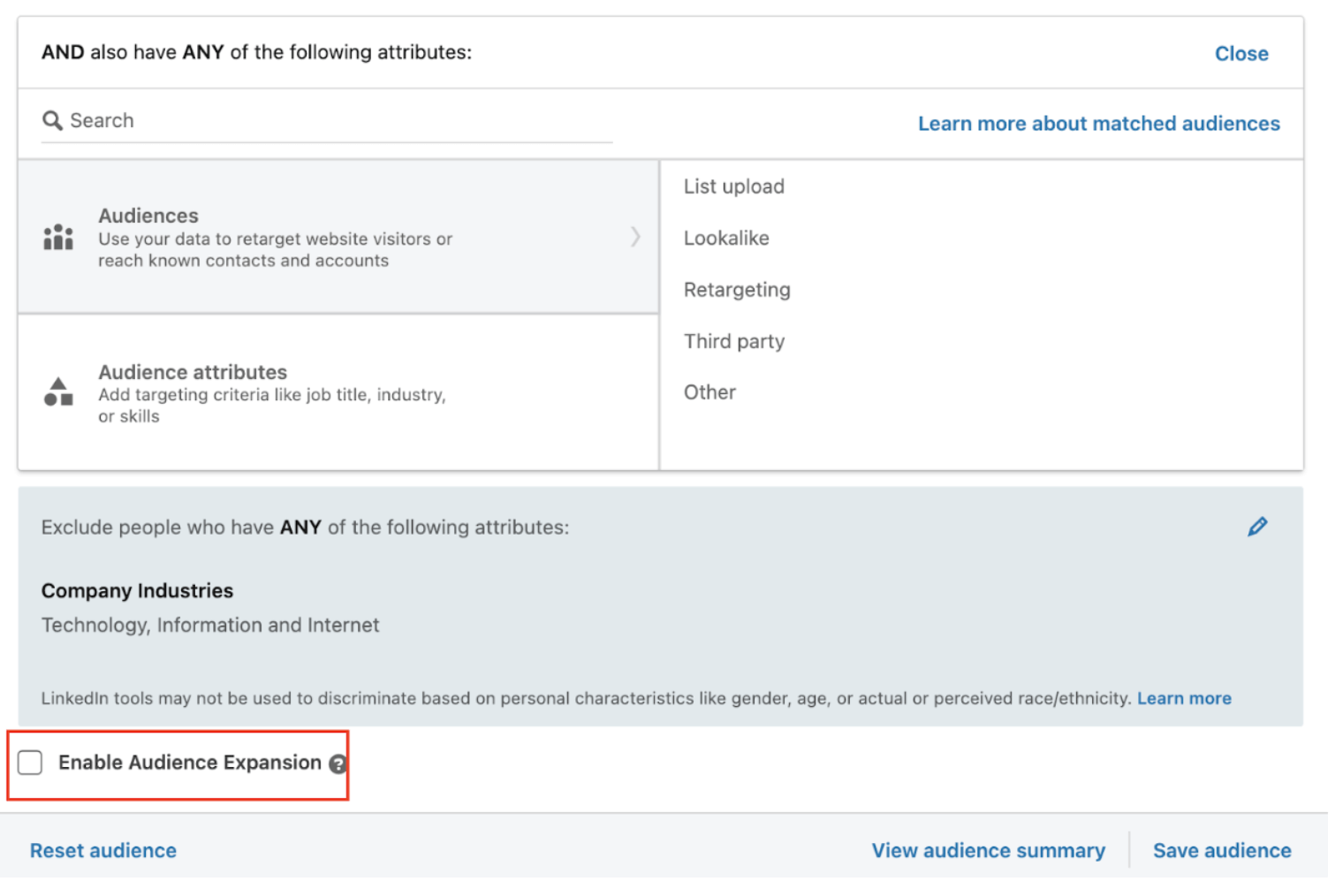
By using LinkedIn’s Audience Targeting options, you’ll make sure that your ads are being shown to the right people and maximize your chances of getting conversions.
Not to sound like a broken record, but keep reviewing and adjusting your targeting to make sure you’re reaching your ideal customer.
5. Use LinkedIn’s conversion tracking
To set up conversion tracking on LinkedIn, you’ll need to install a small piece of code, called the LinkedIn Insight Tag, on your site. This will allow you to track a variety of conversion actions like form submissions (like contact us or ebook download), page views (like for your product pages), clicks on a specific link, and more.
![]()
This will allow you to see which of your ads are driving the most conversions so you can optimize your campaigns accordingly.
For example, if one ad is generating a lot of clicks but very few conversions, you may want to consider changing either the ad copy or the targeting to improve performance. On the other hand, if an ad is generating a high number of conversions, consider either increasing your budget for that ad or creating similar ads to capitalize on its success.
Overall, LinkedIn’s conversion tracking is a brilliant tool for optimizing your LinkedIn Ads. By regularly tracking and analyzing your conversions, you can make data-driven decisions to improve the effectiveness of your campaigns.
6. Use LinkedIn’s insights & analytics
In addition to standard metrics, LinkedIn offers advanced analytics such as demographic data, interests, and job functions. This data is extremely useful to help you understand who is interacting with your ads and how they are engaging with your content.
To access LinkedIn’s insights and analytics, you’ll need to have a LinkedIn Ads account. From the dashboard, you can view a range of data and metrics including impressions, clicks, conversions, and cost per action (CPA). You can also view data by specific campaigns, ad groups, and ads to get a more granular understanding of your performance.
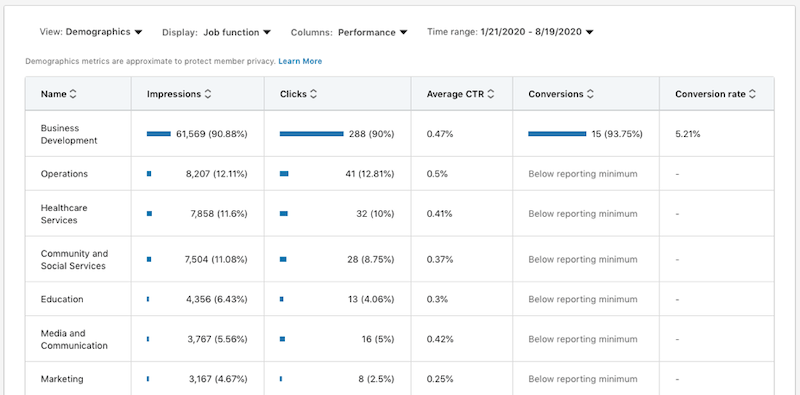
By using LinkedIn’s insights and analytics, you can identify areas for improvement and optimize your campaigns. If you notice that an ad is generating a high number of clicks but a low number of conversions, you may want to consider changing the ad copy or targeting to improve its performance. On the other hand, if an ad is generating a high number of conversions at a low cost, you may want to consider increasing your budget for that ad or creating similar ads.
LinkedIn insights are another great tool to get the most out of your LinkedIn campaign. Track, track, and track your data over time to get the most out of your LinkedIn budget!
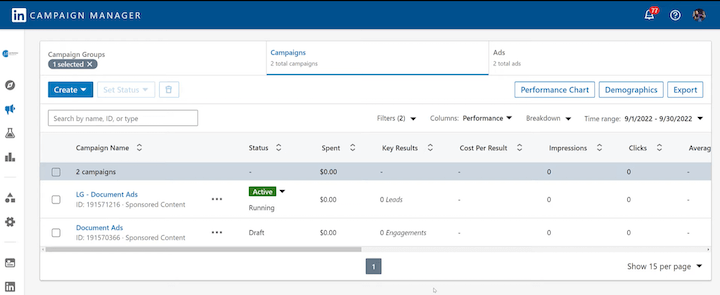
7. Optimize for mobile
Most people use LinkedIn on their mobile devices and spend significantly more time on LinkedIn while using their mobiles, so make sure your ads and landing pages look great on mobile!
Optimize your LinkedIn campaigns
So there you have it: seven bulletproof ways to optimize your LinkedIn ad campaigns and get the most for your budget.
- Define and regularly update your target audience
- Create great ads
- Test, test, and then test some more
- Use LinkedIn’s targeting options
- Use LinkedIn’s conversion tracking
- Use LinkedIn’s insights and analytics
- Optimize for mobile
All that’s left for you to do now is start implementing these tips and tricks on your LinkedIn campaigns and get ready for higher ROI!
The post 7 Ways to Optimize Your LinkedIn Ads for Peak Performance appeared first on WordStream.
* This article was originally published here
Sunday, January 29, 2023
Reminder- Supercharge Your Strategy With Content Syndication, January 26 [Webinar]
This is a reminder for the MarketingProfs webinar to be held on January 26, 2023. MarketingProfs is hosting a webinar ‘Supercharge Your Strategy With Content Syndication’ on Thursday, January 26, 2023, at 2.00 pm ET. The MarketingProfs team says, “Join Abbi Tanton and Stacy McMaster as they break down the ultra-efficient benefits of content syndication—namely […]
* This article was originally published here
Saturday, January 28, 2023
VidAmaze uses a psychological discovery to increase sales #ad
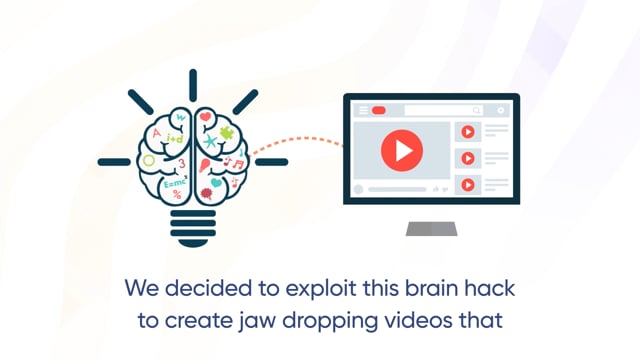
Chris Jenkins and his team have just released VidAmaze software, designed to make your videos more compelling. Whether you’re using video to send pitches, proposals, cold emails, JV requests, VSLs, or anything else, chances are your video is getting ignored by at least 95% of the people who receive your link. What if there were […]
* This article was originally published here
Friday, January 27, 2023
How to Create an Editorial Calendar (Tips, Tools, & Free Template!)
Being a content creator can be overwhelming. Keeping up with blog posts, guides, and everything else on the agenda is hard work!
Now, imagine a system that keeps track of all the content you want to create, all the steps you have to take when creating it, and where each piece of content is at in its creation process.
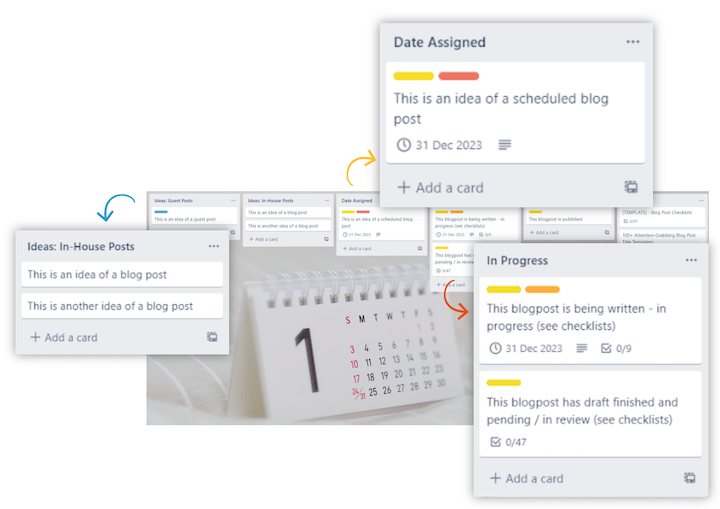
Sound like a distant dream? Well, it’s not. It’s called an editorial calendar and in this post, I’m going to show you exactly how to create one, with a free template too!
If you’re looking for a way to streamline and speed up your work flow, read on.
Table of contents
- What is an editorial calendar?
- Why use an editorial calendar?
- How to create an editorial calendar
- Free editorial calendar tools
- Free editorial calendar template
What is an editorial calendar?
An editorial calendar is more than just a schedule of your content. It’s a visual tool that lets one person or an entire team to plan, create, schedule, and promote content—for the next week, month, or even year. It includes the tasks, team members, and due dates involved at every stage.
Why use an editorial calendar?
The benefits of using an editorial calendar are many, but here are a few:
- More cohesive content. When you plan out your content in advance, you can organize it into themes and create pieces that support one another each month.
- Save time. You always know exactly what content to work on next, taking writers block out of the equation. Plus, all of your tasks are prioritized and streamlined. Some editorial calendar tools even have integrations where you can publish and promote across multiple platforms at once.
- Stay on track. An editorial calendar ensures that you and every team member can progress along with the timeline of a project, and make sure no task is left undone or delayed.
- Store ideas. Combining an idea bank with your content calendar is very effective idea capturing on the go, especially if you can access your calendar on mobile.
In my experience, using an editorial calendar has made a tremendous difference in the way I work and I have never looked back. Procrastination often occurs when we don’t know what to do next, and so we delay the work at hand.
But for me at least, when I know that all I need to do is conduct the different tasks listed in my specific checklists, I am more productive and I procrastinate much less. Now, I hope it can do the same for you!
Keep reading and I’ll show you how you can use a free template of a Trello-based editorial calendar.
How to create an editorial calendar
Here are some foundational principles to guide you in the process.
1. Establish a loose content strategy
While an editorial calendar can help you to refine your content strategy, you do need to have an initial framework to begin with. You can use our guide to creating a content strategy for a deeper dive, but here are some basic questions to start with.
- What are your goals? Are you looking to increase organic traffic with blog posts, generate leads with gated content, produce sales enablement materials? This will help you answer the next question…
- What type(s) of content are you making? For organic traffic, you’ll need SEO blog posts. For gated content, you’ll need to produce PDF ebooks. For sales enablement, you’ll need to create one-sheets and slide decks. For brand awareness and link building, you’ll likely need to write guest posts.
- How much content do you want to publish? Based on the content type and team size, you should have some realistic goals and objectives for how much content you want to publish each week, month, and year.

2. Lay out your work flow
Once you have an idea of what content you want to produce and how much of it, you can lay out your workflow. This includes:
- Your ideation process. How do you find, store, and manage your content ideas?
- SEO optimizations. You’ll want to include keyword research and on-site and off-site tasks.
- Lay out the different stages and specific activities of your workflow, and assign any tags, color codes, or labels that are important to visualize and maintain production timelines.
3. Choose an editorial calendar software
With an understanding of your strategy, workflow, and team size, now you’ll need to find out which software is most suitable for you and/or your team. Which is what this next section will cover.
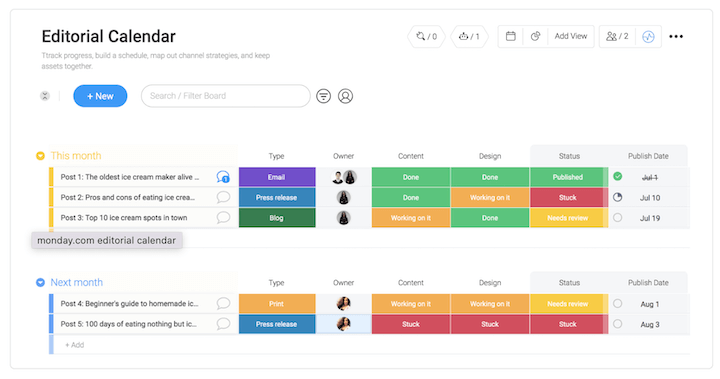
Editorial calendar tools
There are several different approaches and tools you can use to create your own editorial calendar for free.
Project management software
Project management software like Asana and Trello are often the go-to for editorial calendars. My coworkers and I use the free version of Trello and we love it! With Trello, you have a workspace and within your workspace you can create boards. Within boards are cards where you can add descriptions, checklists, labels, due dates, attachments, and more. This makes it simple to keep track of various aspects of the content creation process.

You can also invite others to work on your boards. This is great for collaboration, but not the best for large teams since it can become quite messy with too many cards and labels.
You can upgrade to the paid version for more power-ups and powerful integration features.
Keep reading to download our Trello editorial calendar template.
Spreadsheets
Spreadsheet software like Excel and Google Sheets can be used for editorial calendars if you don’t have the time to learn new software, but they are more manual and not as visual. I have made an example in a spreadsheet to demonstrate what an editorial calendar in Excel/Google docs might look like. Feel free to make your own based on this suggestion.
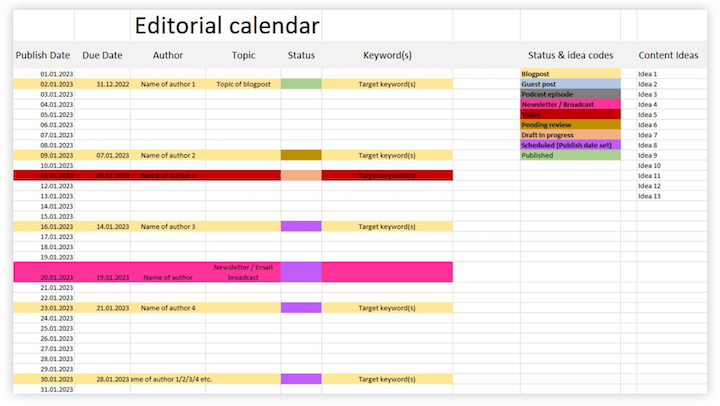
Regular calendars
Regular calendars like Outlook or Google Calendar can be good choices for visualizing and scheduling tasks fast and easy—plus you’ll get built-in reminders. Furthermore, you can create checklist templates with specific tasks across the different stages of the workflow, and paste them into the calendar note field to keep track of what you have done and what’s remaining.
Nevertheless, regular calendars might not be the best if you want to keep track of status in an orderly manner and see everything in one glance. Here’s a simple overview of how a month’s worth of planned content might look like in Google Calendar, with color codes used to identify the type of content and status.
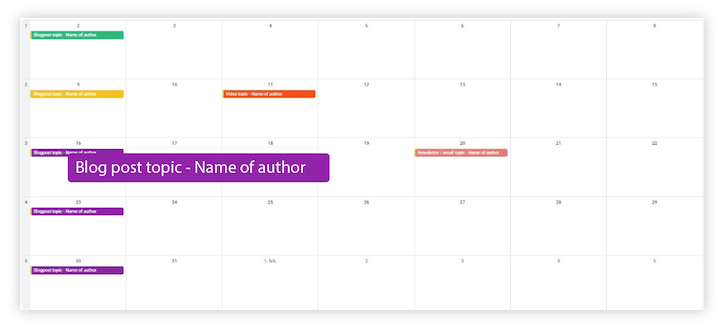
Free Trello editorial calendar template
Ok! Let me share with you my Trello editorial calendar template. It works wonders for me in building out my content marketing funnel, so I want to share it with you!
Here’s the link:
Trello editorial calendar template
Here’s what it looks like:

And here are its three components:
- Lists: The lists are used to represent the different stages of content, from ideation to promotion.
- Checklists: The checklists are used to add tasks to cards.
- Labels: Colored labels represent statuses, for example “Pending review”.
When you decide to make content on one of your ideas, simply move the card into the “date assigned” list and set a date for it.
The lists
This Trello editorial calendar board consists of 6 lists:
- Guest post ideas: Stores all your ideas for guest content
- In-house post ideas – Stores all your ideas for own content
- Date assigned – Content ideas that you have scheduled
- In progress – Content that are in the making
- Published – Published content
- Resources – Checklist templates and other resources.
As mentioned above, each list consists of cards, which are your content ideas. You can add checklists, labels, and dates to each card.
The checklists
This editorial calendar has several different checklists, each relevant to different stages of the content creation process. Alright, but what kind of checklist am I talking about here? Well, in fact, checklists for helping you along every step of the process!
- Keyword research – This is the very first checklist you conduct when creating a piece of content. Here you can choose between the free approach, or the paid approach using Ahrefs. I use both methods. I have made a post on how to do free keyword research.
- Review draft checklist: Title, content structure, call to action, images identified.
- Review checklist. Relevant when editing your first draft and getting it ready for publication. It’s basically on-site SEO stuff, optimizing for social media sharing, quality check etc.

- Publishing and initial promotion checklist. For publishing and promoting your content. It’s a list of several different channels to promote your content in.
- Follow-up promo checklist. Promotion activities one year after publication.
- Pinterest publishing checklist: Step-by-step checklist on how to make pins and schedule them for post promotion on Pinterest.
To import any of these checklists into a card:
- Go to the card in which you want to import a checklist
- Click the “Checklist” option on the card’s right-hand side.
- Choose “Copy items from…” and choose your intended checklist from the menu.
The labels
In this template, I use labels for content type as well as status. This is great for staying organized and in control of your schedule.
You can add new labels as well to customize it as you wish. Here are the labels I use for content types:
- Blog post
- Video
- Email newsletter
- Guest post
- Freebie
- Podcast episode
- Passive income products
Here are the labels I use for content status:
- Draft in progress
- Pending review
- Scheduled (publish date)
- Published
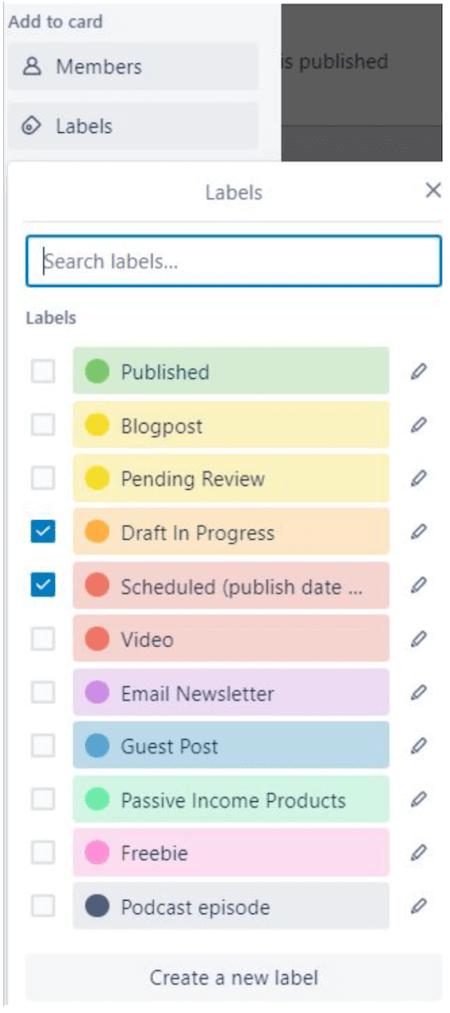
How to get this free editorial calendar template
Here’s how you get your copy of the board:
- If you don’t have a Trello account already, go sign up for Trello at Trello.com
- Log in to your Trello account
- Once signed up / logged in, click here
- Now you should be inside the board. Click the icon with the 3 dots on it at the top right, and choose “More”.
- Click on the “copy board” option

- Now go back to your workspace overview in Trello. You should be able to access your new editorial calendar from there!
Pro tips for this editorial calendar
Now I’ll leave you with some final tips for getting the most out of this template!
1. Customize to your liking
Note that this editorial calendar is a template, and you can edit it the way you want. The more detailed customization is added to it, the better. If it suits your needs as it is, great!
2. Get Trello for mobile
Download the Trello app on your mobile phone and use the widget to capture ideas quickly when you’re out and about. Here’s how
- First, download and install the Trello app from Appstore or Google Play
- Second, add the widget to your phone’s widget area
- Then, wait until you’re hit with a content idea. Now, quickly get your phone out and click the widget’s “Add card” button
- Choose the Trello board and the list that you want the card to be added to. This would be one of your idea lists. Like this:
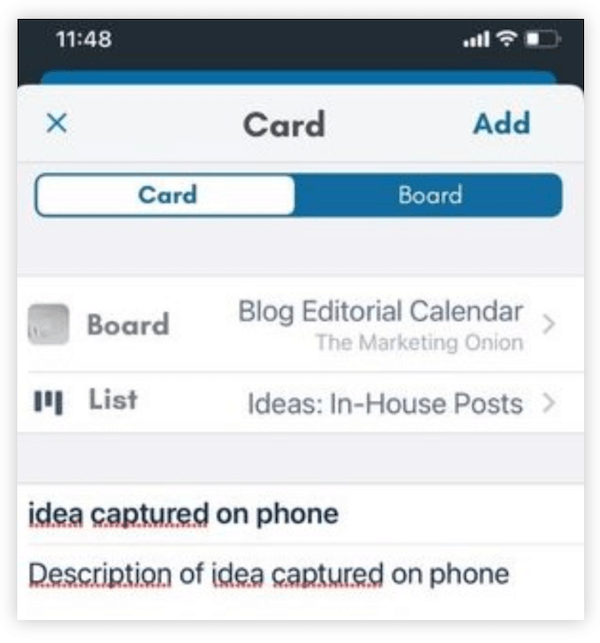
- Finally, click the “Add” button, and that’s it! Your new idea has been saved to your idea list.
3. Use the calendar power-up
When the calendar power-up is activated in Trello you will see the scheduled posts in the Trello calendar making up to a month’s worth of content visible at a glance. Simply click the calendar power-up located at the top of your board.
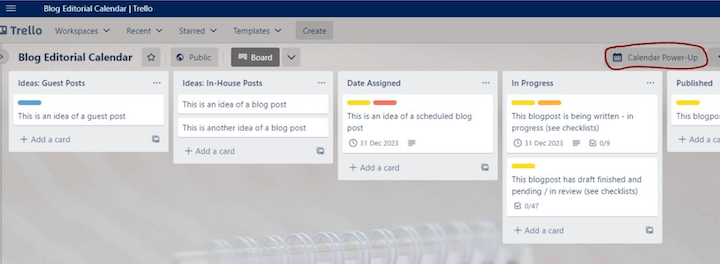
Now you’ll see a calendar with all your cards visible at the assigned date, with its labels. I have done some demo scheduling with cards in all the different lists to show you how it looks like in the Trello calendar
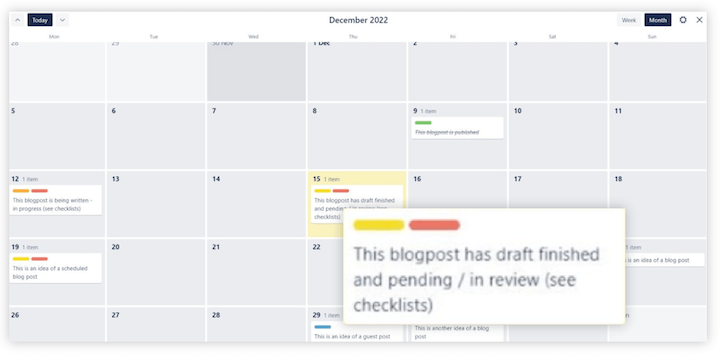
In the calendar view you may click on the cards and view them directly from the calendar interface. Notice that all the status labels are also showing, which gives you a good overview of status of all the scheduled posts. The labels are explained in more detail below together with the other features of the board.
4. Use Mammoth
If you have a WordPress site and write your content in Microsoft Word or in Google Docs, you can use a plugin called Mammoth .docx converter to import a post from your writing client easily into WordPress!
5. Use Yoast
Now you can just do the tasks in this checklist and get the stuff done! The YOAST SEO plugin is very helpful when working through this list.
Start building out your editorial calendar
Using some form of an editorial calendar is a must for every content creator. I hope you have enjoyed reading this post and that it has provided you with some constructive value.
Enjoy this editorial calendar! I hope it makes a difference in your workflow efficiency. Please leave a comment if you have any questions and I’ll be happy to answer them the best I can!
Thank you!
About the author
René Frydson is a 33-year-old passionate digital marketer, blogger, and productivity enthusiast from a small city called Forde in Western Norway. Alongside his formal education in marketing management with a specialty in digital marketing, Renè has 6+ years of experience from his own ventures online. He has hands-on experience from his employment in the marketing department of a large energy company in Norway. Join him over at themarketingonion.com where he publishes interesting and informative content within the digital marketing and productivity space.
The post How to Create an Editorial Calendar (Tips, Tools, & Free Template!) appeared first on WordStream.
* This article was originally published here
Thursday, January 26, 2023
10 Ways to Optimize Your Performance Max Campaigns for Real Results
Google Ads’ Performance Max campaigns have generated a fair bit of noise among advertisers since their inception in 2021—from full enthusiasm to staunch opposition and everything in between.
The reality is, if Performance Max is right for your business, it can be a super effective campaign type if you know how to fully leverage it.
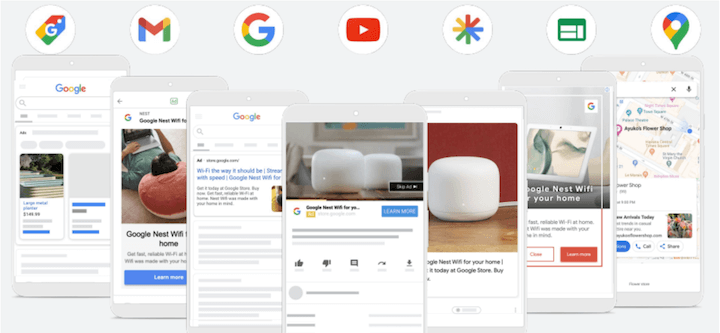
Which is what we’re going to cover in this post. Continue reading to find out:
- What they are and how they work
- The pros and cons of Performance Max
- 10 ways to optimize them to get the highest returns.
What are Performance Max campaigns?
Google’s Performance Max campaigns, also known as PMax, were rolled out in all Google Ads accounts in 2021, making them a fairly new addition. This cross-channel, fully automated Google Ads campaign type allows you to show ads across all of Google’s ad networks in a single campaign, including Search, Display, YouTube, Discover, Maps, and Gmail.
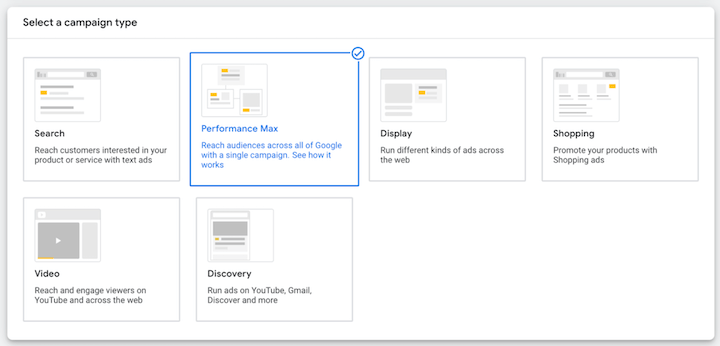
The way these campaigns work is, you first specify your goal. Then, similar to building out a responsive display ad, you provide your assets like images, videos, logos, headlines, descriptions, and more. You can review ad previews to get an idea of how your ads will look. Once you set the campaign live, Google will generate ads across the applicable channels whenever eligible, using machine learning to serve the right ad at the right time with the right bid, to optimize for your goal.
Pros & cons of Performance Max campaigns
Like any campaign type, Performance Max comes with its pros and cons.
PMax pros
- Full automation means Google does the work for you, but you’re able to steer that automation and performance with the assets and Audience Signals you provide.
- You can reach new audiences across all of Google’s channels.
- As goal-based campaigns, they are ideal for ecommerce and lead generation businesses.
PMax cons
- You need to have full-funnel conversion tracking set up—both because it’s a requirement based on the way the campaign type works, and also in order to assess and optimize your performance.
- While it can take work off your plate, automation comes with its own pros and cons. You will lack control over many campaign elements that you are normally able to carefully manage with standard Google Ads campaigns, including where ads are shown, creative combinations, keywords, and search queries.
- PMax campaigns don’t provide insights into remarketed versus new customers or brand versus non-brand, within a campaign.
- Performance Max campaigns require a wealth of creatives and assets to perform strongly, so you will need plenty to upload in order to get the most out of this campaign type.
10 ways to optimize your Performance Max campaigns
Although automated, there are still a number of ways to optimize your Performance Max campaigns for maximum success. Let’s take a look.
1. Commit to your campaigns
Being fully automated, PMax campaigns require sufficient amounts of data and machine learning to be effective. Be prepared to budget at least $50-100 per day for at least a month. In fact, Google recommends at least 6 weeks to allow the machine learning algorithm to ramp up and have sufficient data to compare performance.
2. Add as many assets as you can
The more assets you add, the better, because it will increase the chances of an ad being eligible to serve across all types of inventory. Note that if you’re using a Merchant Center feed, you don’t need to upload any product images. Instead, go with lifestyle or brand creatives that will complement product feed images.
If you only want to run Google Shopping campaigns, don’t add any assets at all and simply use your feed. This way, your campaign will deliver Shopping ads along with Display and YouTube ads but the latter will both be in Shopping format.
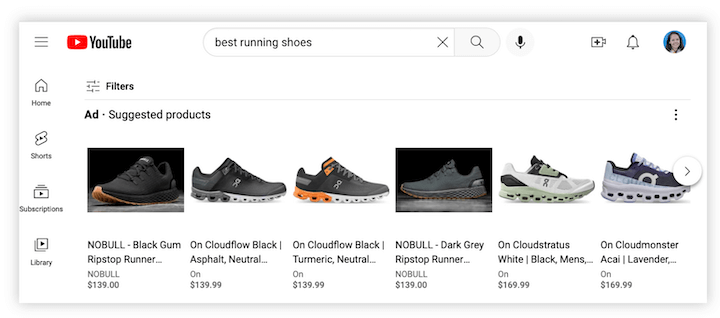
3. Know the watchouts & workarounds
We’ve shared a full post on Performance Max dos, don’ts, watchouts, and workarounds, but some of them are worth repeating:
- Bidding: For bidding strategy, you are limited to either Maximize conversions or Maximize conversion value, which makes sense given Performance Max campaigns are conversion focused.
- Location settings: Like any other campaign, PMax location settings default to “Presence or interest.” If you only want to reach people in that location, switch to presence only.
- Audience signals: With PMax campaigns, you don’t choose an exact audience to target. Rather, you provide “Audience Signals” which Google uses as a starting point. It’s similar to optimized targeting.
- URL expansion: PMax also turns URL expansion on by default. Similar to Dynamic Ads, this feature allows Google Ads to send users to landing pages other than your final URL. If this goes against what you want to achieve, turn this feature off. Or, leave it on but use URL exclusions.
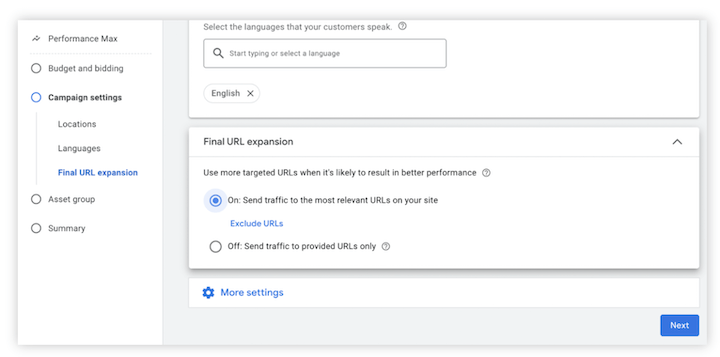
4. Use the customer acquisition feature
Unique to Performance Max campaigns, this feature allows you to choose whether you want to serve the campaign to new and existing customers, or just new users.

5. Optimize your asset groups
When building a Performance Max campaign, you’ll add all of your assets into an asset group. An asset group is a set of creatives that will be used to create an ad depending on the channel it’s being served on. It’s best practice to organise asset groups by a common theme similar to how you organise your ad groups.
Once the campaign has been built, you can go back and add additional asset groups. Structure them in a way that makes sense for your business, which could mean separating them by products or services that you offer.
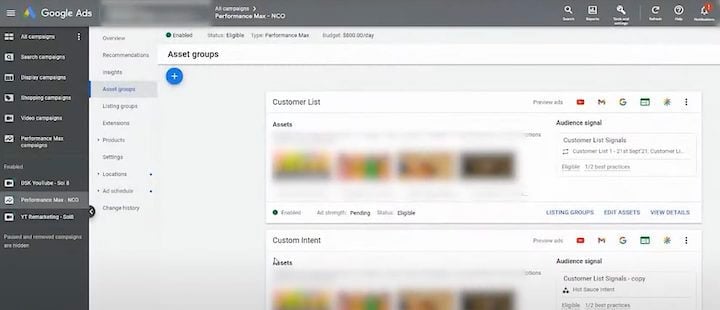
6. Use campaign exclusions
The next PMax optimization strategy is to use campaign exclusions to prevent wasted budget and improve the efficiency of your campaign. This includes:
- Product exclusions. On average, 17% of products in advertising catalogs are not available for purchase, according to DataFeedWatch’s 2022 Feed Marketing Report. So these items should be the starting point for catalog exclusions.
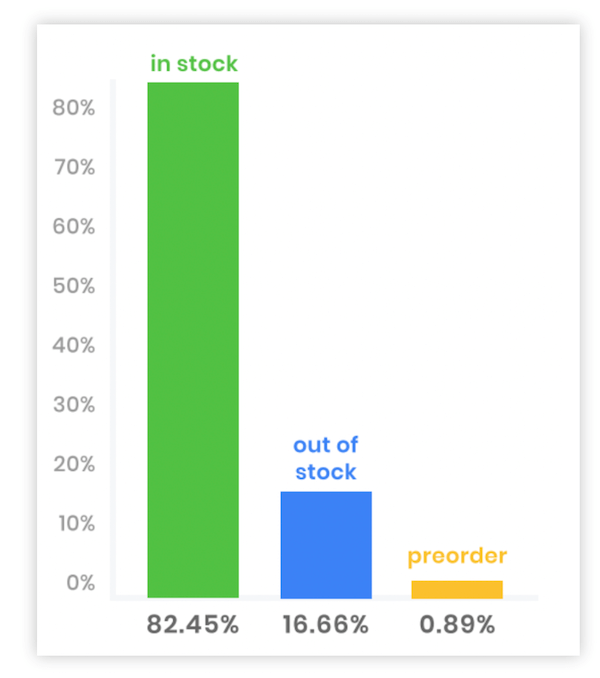
It also makes sense to exclude product variations that are relevant for the same search query, products that are not profitable or low margin, and products with a low conversion rate. To achieve this, you can use Listing Groups and exclude these products by Brand, Product ID, Category, Custom Labels, and more.
In addition to improving the efficiency of your campaign, these campaign exclusions will also minimize the number of products that Google will need to put through the learning phase, essentially speeding it up.
- Keyword exclusions. Use negative keywords to prevent wasted budget on irrelevant queries.
- Existing customers. As mentioned earlier in this article, you can exclude existing customers so that your Performance Max campaign focuses solely on new customer acquisition. When setting up the campaign, check the box ‘Only bid for new customers.’
7. Choose the right bidding strategy
When launching a new Performance Max campaign, you have two options for bidding:
- Maximize Conversions to get the highest number of conversions for your budget.
- Maximize Conversion Value to get the highest value conversions. You may get fewer conversions with this bid strategy, but the idea is they are worth more.
Once your campaign has a sufficient amount of conversion data, you can experiment with either Maximize Conversions with Target CPA or Maximize Conversion Value with Target ROAS bid strategies in order to take your campaign to the next level.
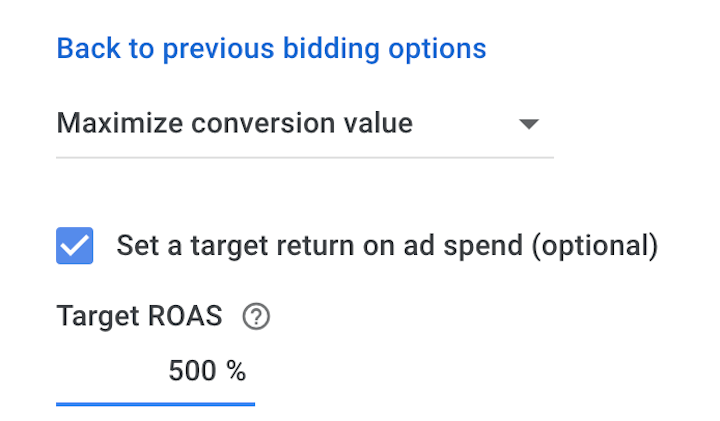
You do have the option to use Target CPA or Target ROAS from the get-go but it is a best practice to first gather all important conversion data when launching a new campaign.
8. Use ad extensions
Google Ads extensions (now called assets) allow you to increase your ad real estate and increase its relevance and attractiveness with additional information.
There are 14 ad extensions in total—reviews, locations, call, pricing, promotion, and more—but you should always consider using the following:
- Sitelinks: These highlight and direct users to other relevant pages. For example, you could use an about us page, highlight relevant product categories, a pricing page, and more. There are plenty of options and they have a large visual impact on your ad. According to Google, by using the recommended minimum of four site links alone, advertisers can see a 20% increase in click-through rate on average by using this one form of ad extension.
- Callouts: Small snippets of information, each 25 characters in length, which can highlight selling features or key USPs. Try to include a minimum of 8 callouts
- Structured snippets: These are used to highlight specific products, services or features in a listicle format. For example, a bag retailer may include a Product Structured Snippet to highlight clutch bags, handbags, tote bags, backpacks, messenger bags, and card wallets
To illustrate how powerful ad extensions can be, here is an example of a Search ad without any ad extensions running alongside it:

As a comparison, here are two other Search ads that have served in the same auction showing numerous ad extensions. The Wolf and Badger ad features sitelinks, a promotion extension, and a location extension, while the Cambridge Satchel ad features sitelinks, a location extension, a review extension, and a price extension.
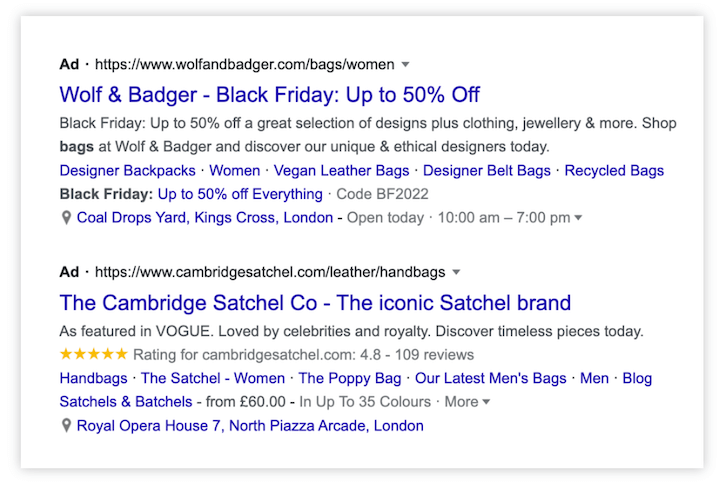
9. Ensure your data feed is up to scratch
This is relevant for advertisers submitting products via a data feed, using the Merchant Centre. Ensure you include as much information as possible in your feed and that it is up to date and relevant.
Important product identifiers that need your attention are listed below. The first three help Google to understand what you are selling and the last three are equally as important from an optimization perspective:
- Brand name
- Manufacturer part number (MPN or SKU)
- UPC code (aka GTIN)
- Descriptive titles
- Google taxonomy/categorization
- Product type
Your data feed will be the foundation of your PMax campaign and will have the biggest impact on results over anything else.

More tips on optimizing your product feed here.
Consider using a data feed management solution to get the most out of ecommerce advertising and for Performance Max campaigns. Feed management tools simplify and automate the nitty gritty feed work, which can ultimately boost online visibility and increase conversion rate and ROAS.
According to the aforementioned Feed Marketing Report, these tools are even more beneficial for certain ecommerce sectors, like automotive, fashion, and home & garden, that deal with a higher complexity of data feed management, due to the high amount of products and variations.
10. Optimize your audience signals
If you are not seeing the desired results after running Performance Max campaigns for a sufficient amount of time, one area to review is Audience Signals.
Tighten up Audience Signals by using your actual business data and prioritize this over using Google’s interests, which include the in-market and affinity audiences.
- Customer lists should be your number one choice, providing you have enough customer data and the permission to use data for advertising purposes. Customer lists are powerful because they use your real-life customer data to help find new customers
- Customer intent audiences take Google’s interests to the next level using relevant keywords
- Website visitor audiences are also a good option, particularly if you are unable to use customer lists. Consider creating an audience signal based on website visitors, or website converters
Google’s interest-based audiences are still a great option but you should try out the above if you want to elevate your Audience Signals.
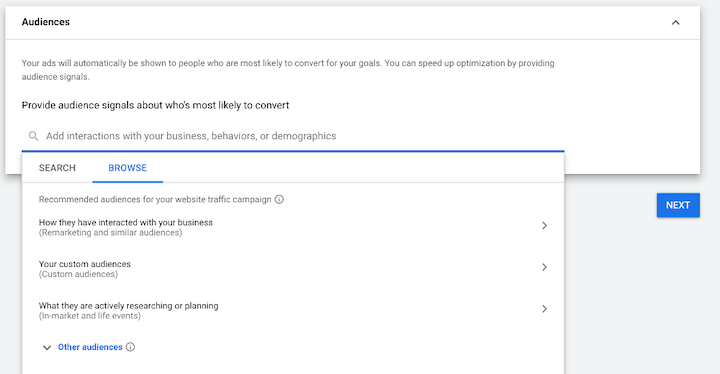
Start optimizing your Performance Max campaigns now
Performance Max campaigns unlock new opportunities for advertisers and businesses that have perhaps previously been missed, from cross-channel promotion and getting your ads onto new channels, to finding new customers and benefitting from Google’s automation and machine learning technology.
If you are an ecommerce and lead gen business, I would highly recommend experimenting with Performance Max campaigns and using the optimizations in this post! To recap, here’s how to optimize your Performance Max campaigns in Google Ads:
- Commit to your campaigns
- Add as many assets as you can
- Know the watchouts & workarounds
- Use the customer acquisition feature
- Optimize your asset groups
- Use campaign exclusions
- Choose the right bidding strategy
- Use ad extensions
- Ensure your data feed is up to scratch
- Optimize your audience signals
About the author
Jacques van der Wilt is a leader in the feed marketing industry and an entrepreneur. He founded DataFeedWatch (acquired by Cart.com), one of the largest feed management companies in the world, which helps online merchants optimize their product listings on more than 2,000 shopping channels in over 60 countries.
Prior to that, Jacques has held leadership positions in both the U.S. and Europe. He is also a seasoned guest speaker at industry events and a mentor at Startup Bootcamp.
The post 10 Ways to Optimize Your Performance Max Campaigns for Real Results appeared first on WordStream.
* This article was originally published here
Wednesday, January 25, 2023
These 14 Digital Marketing Trends Will Have the Biggest Influence in 2023
In case you missed it, we covered some of the top digital marketing trends of 2023, which will include a mix of both familiar tactics and emerging technologies and strategies.
There’s blockchain, AR/VR, live streaming, short-form video, and more. Many of these trends have already made their debut in previous years but are picking up momentum and evolving in 2023. So in this post, we’re going to take a deeper dive into the patterns within these trends and how they will influence marketers throughout the year.
2023 digital marketing trends & predictions, according to experts
To get a well-rounded perspective on how the 2023 digital marketing trends will impact consumers, marketers, and brands, we came up with some key questions and interviewed marketers, advertisers, and business owners across verticals. They include:
- How will social platforms adapt to TikTok?
- Will AI content generation help or hurt content marketing?
- What will DEI efforts focus on this year?
- Will automation and PPC learn to get along?
- How will the rise of Gen Z impact brand strategies?
- What changes will we make in privacy?
- Will we get a handle on the supply chain?
Let’s take a look at what they said.
How will social platforms adapt to TikTok?
Imitation is the most sincere form of flattery, right?
1. Some social platforms will imitate or partner with it
Six-year-old TikTok is one of the most popular social media platforms in the world with more than one billion monthly active users. It’s especially popular with consumers born between 1997 and 2012, who are collectively known as Gen Z.
As this generation grows in spending power, other social platforms are scrambling to keep up—and to stay relevant.
Their most likely tactic in 2023 is imitation.
For her part, Tetiana Sira, senior digital marketing executive at Energy Casino, noted social media platforms have already responded by either copying TikTok outright, such as Instagram with Reels, or by implementing more vertical videos, like Pinterest and Twitter.
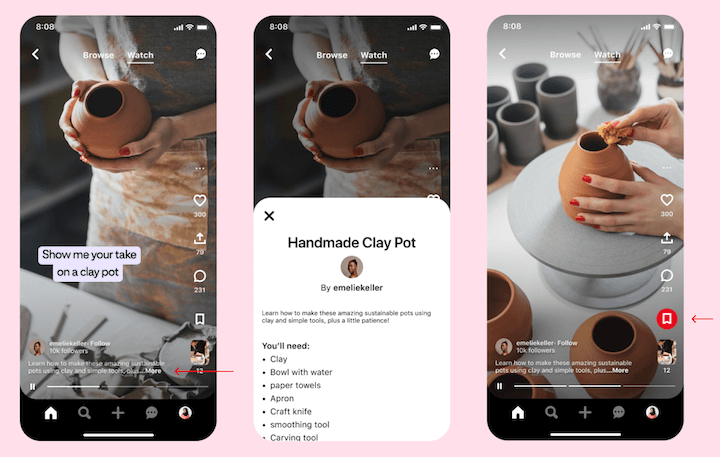
“There’s clearly a much higher effort put into video consumption and trying to make it as seamless as possible,” she said.
Shahnawaz Sadique, a blogger at CommonStupidMan.com, however, noted social platforms may also partner with TikTok to gain access to its content and users—or even acquire TikTok or similar platforms outright.
But, according to Carly Campbell, a blogger at Mommy On Purpose, there’s more to TikTok’s success than just short-form videos. It also has an easy-to-navigate interface and “intense focus” on user-generated content. These elements have helped the platform stand out and allowed it to create an engaged community.
“To effectively challenge TikTok, other social platforms will need to mimic the same user experience that has made it so popular,” she added.
2. Others will distinguish themselves
That being said, there are several ways social platforms could also distinguish themselves from TikTok in 2023.
One is by focusing on other types of content, such as long-form videos or live streaming, Sadique said.
Another is investing in AI to improve video capabilities and generate more engaging content, added Jessica Shee, manager at iBoysoft.
Campbell pointed to Snapchat, which is focusing on messaging.
“Similarly, Facebook is focusing heavily on its gaming and group features, which can also be seen as a way to set itself apart,” she added.
What’s more, Averi Melcher, owner of OSO Content, said platforms may re-evaluate their creator monetization strategies to better compete with the TikTok Creator Fund, which compensates users who generate at least 100,000 authentic video views monthly, to encourage creators to stay on their platforms as well.
“We are seeing this with Instagram subscriptions, Facebook Reels, Pinterest’s beta program, and YouTube Shorts,” Melcher said. “If these platforms are able to incentivize and better reward creators, I think they will successfully gain back some market share.”
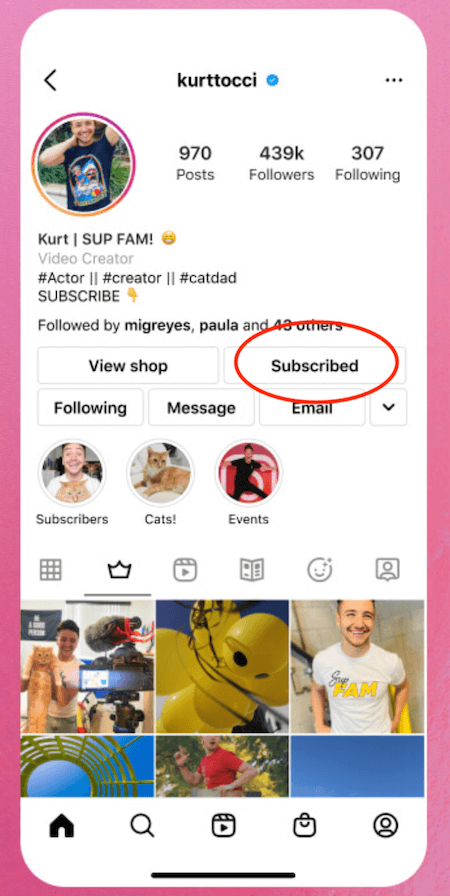
In addition, Melcher said it’s possible social platforms may improve their creator campaign attribution models or even build out native communities to connect people with brands—and therefore better ways to monetize their content.
Will AI content generation help or hurt content marketing?
If you have a finely tuned content marketing funnel, you’ll want to tune into the perspectives on this 2023 digital marketing trend.
3. The advantages will abound…
AI content generation started to go mainstream in 2022—and it will play an important role in marketing in the year to come.
For starters, there’s potential for AI content generation as a brainstorming tool for marketers.
“At Delightful Ads, we are already using it as a starting point for creating assets needed for our clients’ advertising campaigns—such as ad copy, headlines, hooks, graphics and even videos,” said digital ads strategist Jenn Martin. “AI offers new ideas and angles that we may not have thought of on our own.”
AI will also be increasingly used to create content tailored to specific audiences. That means taking data like demographics, past purchases, interests, and needs into account, added blog coach Becca Klein.
“[The resulting content] could include personalized emails or targeted ads that would be more tailored to the individual needs of their customers,” Campbell added. “As they become increasingly good at utilizing natural language processing, marketers will be able to develop more dynamic and engaging campaigns.”
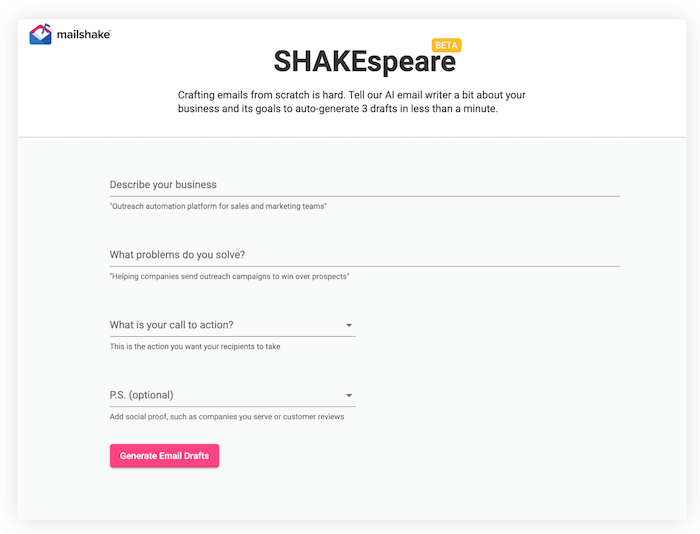
Mailshake’s AI email generator SHAKEspeare
As a result, relevance and effectiveness will also increase.
And, with better content, brands are better poised to win market share.
“With [the support of AI tools], content can be kept at a high standard over time and the brand’s reputation may be protected,” said Peter Drow, head of marketing at Nccttingtools. “Establishing a name for yourself in the marketplace is a surefire way to give yourself an edge over the competition.”
And, with quality content comes other advantages.
“AI content generation tools can help businesses to ensure the accuracy and consistency of their content, as the tools can be trained to adhere to specific guidelines and standards,” Sadique said.
In turn, this can yield improved return on investment (ROI), Drow said.
This may also help increase revenue.
“Using AI-driven processes, businesses can crank out more and better blog and social media material,” Drow added. “Users’ confidence in these methods can be bolstered through these outlets [as] customers are more likely to buy from reputable companies.”
What’s more, AI helps improve the speed of content creation, said Sugiya Oki, who runs reviews site We Recommend.
“Inevitably, AI-powered writing tools will outpace their human competitors when it comes to speed,” Drow added. “To that end, they are a time-saver for businesses and content producers. This frees up valuable time that may be used for other important tasks, such as improving the quality of the content provided by AI.”
Sadique agreed.
“AI content generation tools can help businesses to create a high volume of content quickly and efficiently, potentially increasing productivity and allowing businesses to focus on other tasks,” he added.
“This can significantly impact a digital marketer’s ability to quickly and effectively create content, as they no longer have to manually research and write blog articles, product descriptions, web content, or other forms of written marketing material,” Campbell said.
Meanwhile, AI tools will increase competition on short-tail keywords with high volume. That’s according to James De Roche, managing partner at Lead Comet, who also noted, “While there can be initial anxiety around this for businesses, it will push content marketers to pursue more relevant, long-tail keywords with more conversion potential.
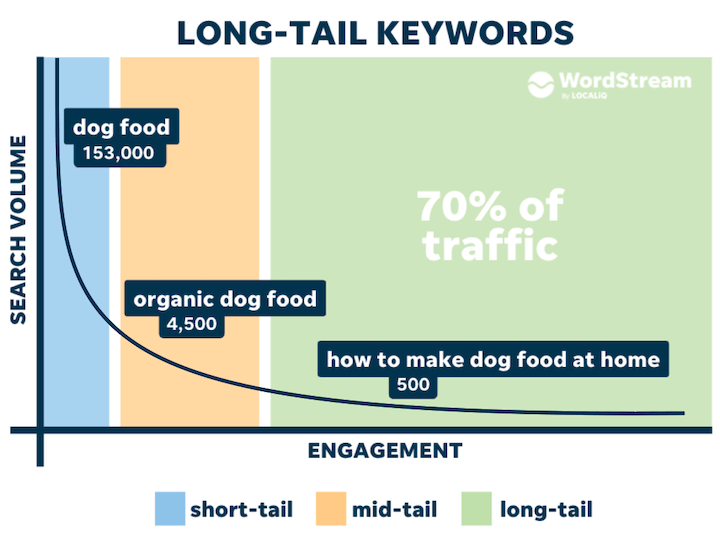
AI may even come to replace some of the services currently offered by search engines.
“This is likely to impact the way that companies approach the use of digital PR and link building,” said Phelan Gowing-Mikellides, business development manager at Digital Trails. “As a result, we are very likely to see a shift in the way that businesses approach their online presence and the strategies they use to reach and engage their target audiences, including changes to their backlink profiles [in 2023].”
AI may also automate the tasks performed by PR professionals.
“Think writing and distributing press releases, managing social media accounts or, at the very least, populating digital channels with high-quality, perfectly optimized AI-generated content,” he added. “This has the potential to displace many PR professionals, as AI is able to perform these tasks more quickly and efficiently than humans.”
4. Human copywriters, don’t panic
But human copywriters shouldn’t panic—they will still have a role to play.
That’s in part because the quality and effectiveness of the content AI produces are only as good as the inputs it receives.
“It still takes an experienced marketer/advertiser to determine not only what prompts to submit, but also what is useful in selecting and refining the finished product,” Martin said.
Oki agreed, noting AI doesn’t understand emotions and therefore can’t grasp search intent.
“There’s still a lot of room for unique creativity that only the human brain can conquer, at least for now,” added Dmitry Sokhach, founder of Admix Global.
That will help distinguish copywriter-generated content from “a massive increase in generic blog content,” as De Roche called it.
“[The latter] may address the query, but it will lack the advice needed to satisfy search intent,” he said. “To do that, you need expert insights and advice.”
This also ties into first-hand experience, niche expertise, and author authority, which we discuss in our 2023 SEO trends.

What will DEI efforts focus on in 2023?
In recent years, diversity, equity, and inclusion (DEI) has become an increasingly important business initiative. Here’s what experts see as being the key focal points this year.
5. An emphasis on equity & intersectionality
In 2023, companies will continue to foster more equitable workplaces—with the key word being “equity.”
Eleanor Fletcher, CEO of The Best Brisbane, explained, “Equity in the workplace refers to the right to fair representation and equal progression chances for people with various backgrounds and experiences.”
Garit Boothe, CEO of Digital Honey, noted this can include efforts to increase underrepresented groups, as well as to implement training and education programs and to promote diversity in leadership and decision-making roles.
“It is also possible that there will be a greater emphasis on intersectionality and addressing the specific needs and experiences of diverse individuals,” he added.
This is something we mentioned in our Best Marketing Strategies for Small Businesses 2023 post.
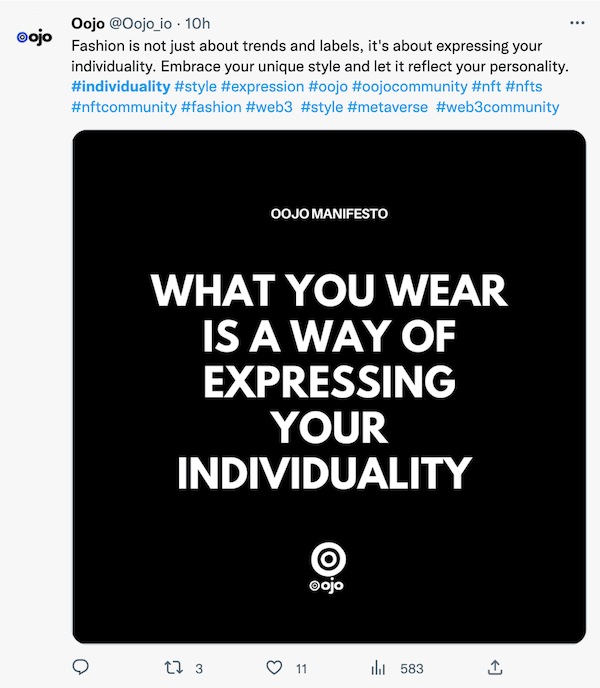
6. More accountability through quantification
We can also expect more focus on accountability as organizations set targets to regularly measure progress.
That’s according to Sadique, who also expects to see more data and analytics—such as tracking diversity and inclusion metrics and identifying areas for improvement—along with the continued growth of employee resource groups and increased focus on diversity in leadership.
Jeff Romero, founder of Octiv Digital, agreed.
“This entails tracking and analyzing diversity and representation at all organizational levels, utilizing competency frameworks and other strategies to lessen bias in hiring and promoting employees, and coaching front-line managers on how to conduct team meetings and collaborative sessions to promote equal respect for all opinions,” he added.
Meanwhile, more companies will take steps to address DEI in campaigns that focus on underrepresented groups or specific social causes relevant to those groups.
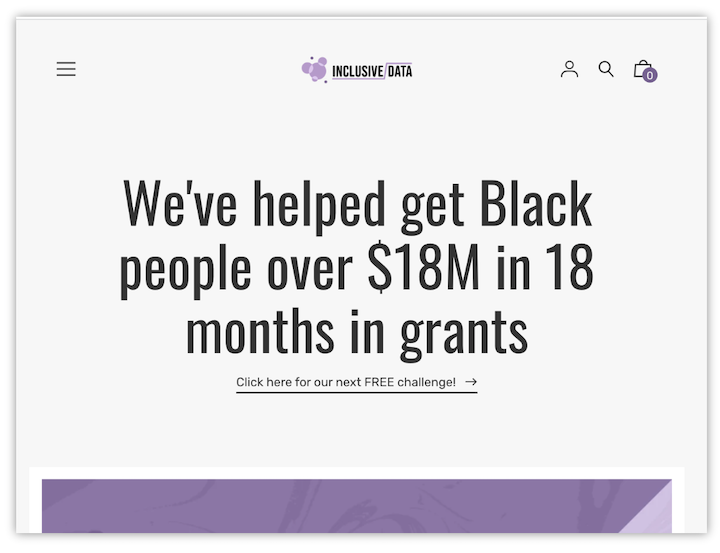
“We can expect this trend of greater representation in digital marketing campaigns to continue into 2023,” said Tomasz Niezgoda, head of marketing at Surfer.
The same is true of content more broadly.
“Marketers are increasingly looking to create content that is inclusive and resonates with a broader range of audiences,” said David Ellis, founder of Teranga Digital Marketing.
Will PPC and automation make friends?
We are all too familiar with Google’s push for automation. We asked experts where they see things heading, sentiment-wise.
7. More positive attitudes toward automation
In 2023, expect to see attitudes toward automation become more positive.
“There has always been a bit of an aversion to automation and AI in marketing and PPC—a lot of people thinking that it will take their jobs,” said Sean Nguyen, a director at Internet Advisor. “The reality of it is automation is there to assist us and help us refine our jobs. While it might take over some tasks, that actually helps us to become better at more complex tasks that aren’t tedious or repetitive.”
Shee agreed, noting automation can help with keyword research, ad testing, and analytics tracking.
This is especially true when it comes to Google Ads.
8. Greater efficiency in Google Ads
To that end, we can expect Google Ads automation to grow as advertisers optimize their campaigns and reach their target audiences more effectively. This automation technology includes bid optimization, as well as ad creation and testing.
The result is improved efficiency and effectiveness, Boothe said.
That is especially true since the release of Google Ads’ Performance Max campaigns in 2021.
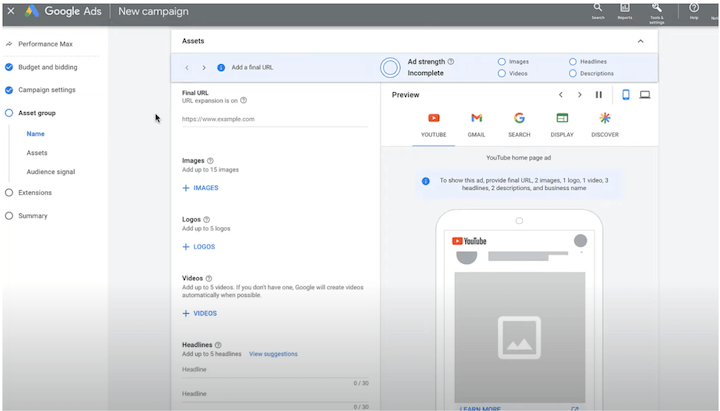
“They learn how to identify where someone is on their path to purchase and show the right ad at the right time on the right Google channel to help a prospect move further along the customer journey,” Martin said. “And they even provide feedback on what is working and what inputs to test in the future that we hadn’t even considered.”
As they become more familiar with the benefits of automation, marketers will likely rely on it more to manage their Google Ads campaigns. However, Sadique warned, it does have limitations, such as the potential for errors and biases. Learn more in our Performance Max Dos, Don’ts, Watchouts and Workarounds.
“Businesses may adopt hybrid approaches that combine automation with manual management in order to get the best of both worlds,” he added.
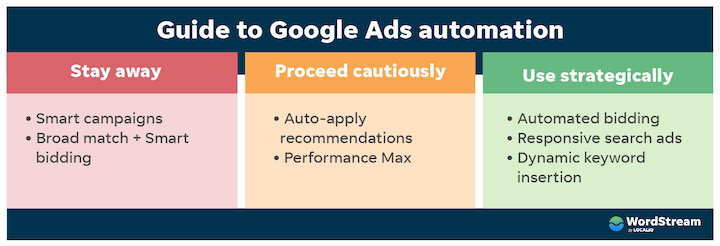
Learn more about a hybrid approach to automation in Google Ads here.
How will the rise of Gen Z impact brand strategies?
As Gen Z becomes more influential, marketers are adjusting their strategies to engage them. Here’s how:
9. Greater influence on authenticity, transparency & accessibility
For starters, focus on authenticity and transparency.
“Brands will need to be genuine and transparent in their marketing efforts in order to appeal to this group,” Sadique said.
Fletcher agreed.
“Gen Z is drawn to marketing that is honest… they prioritize word-of-mouth advertising from friends and influencers and social evidence,” she added.
That means incorporating user-generated content featuring consumers who resemble them and being transparent about their environmental impact, dedication to diversity, and core values.
“Gen Z is more diverse and socially conscious than previous generations, so brands will need to prioritize diversity and inclusion in their marketing efforts in order to appeal to this group,” Sadique said.
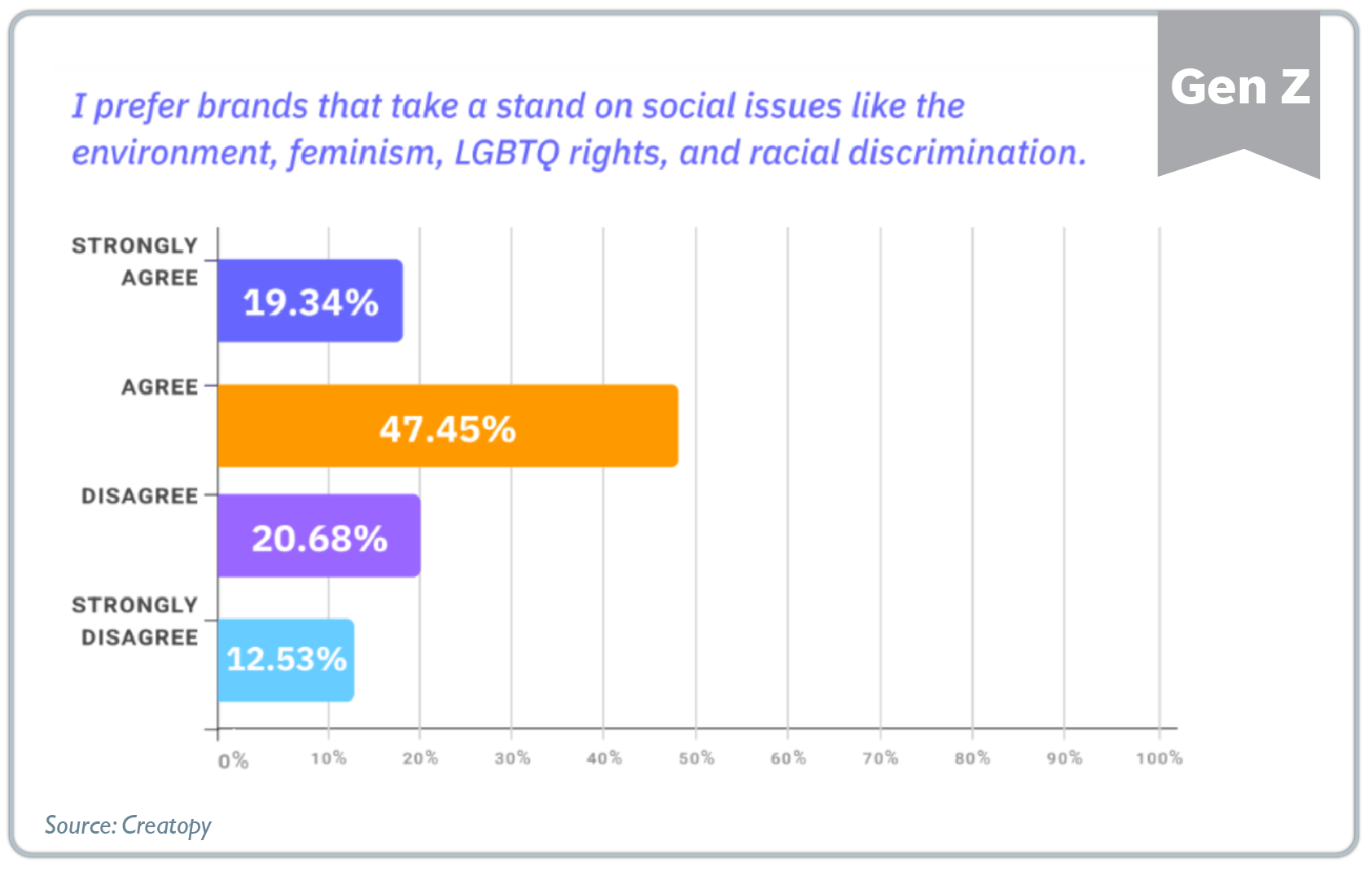
From our post on how to market to Gen Z.
Campbell agreed, noting this also includes accessibility.
“Through storytelling and cause marketing, brands can develop narratives that align with the values and beliefs of Gen Z and that work to create an emotional connection with their target audience,” she added.
10. Immersive experiences
Gen Z also values experiential marketing and immersive experiences, which are key to engaging this cohort, along with omnichannel marketing.
“One of the main challenges for brands when it comes to engaging with Gen Z is understanding the various platforms and digital tools that this generation uses,” Campbell said. “Many Gen Zers have grown up with technology and are highly engaged on social media and digital networks. This means that for brands to capture their attention effectively, they must be present and active on the platforms their target audience uses.”
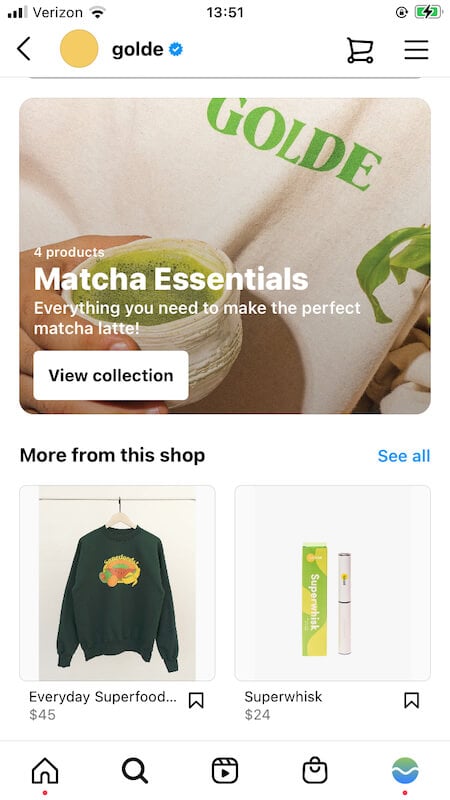
Facebook and Instagram Shops offer immersive, ideal-for-Gen-Z experiences on social media
What changes will we make in privacy?
In addition to automation, privacy is the other unstoppable force that is carving out new paths in marketing each year. Let’s see what directions they’re headed in.
11. More transparent data practices
Meanwhile, privacy-friendly reporting dictates marketers must embrace a more transparent approach to data in which users give explicit consent—and, as Home Grounds CEO Alex Mastin noted, they must strike the right balance between personalization and privacy.
To do so, marketers must clearly communicate their privacy practices to clients and stakeholders and be transparent about the data they are collecting and how it is being used.
They should also use consent management systems and provide clear opt-outs.
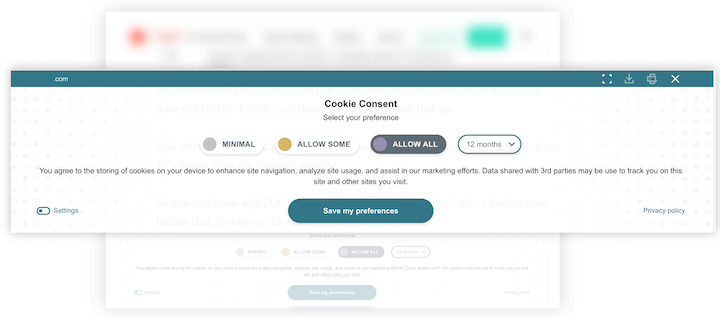
12. Greater adoption of privacy-friendly tracking technology
“Additionally, they should invest in security tools that allow them to measure performance while still keeping customer data safe from misuse or attack by third parties,” Niezgoda said.
But, Sadique noted, marketers can implement privacy-friendly tracking methods, such as using anonymous identifiers or aggregated data, to track and report on key metrics without collecting personal data.
Google’s Topics API, the Facebook Conversions API, Facebook’s Aggregated Event Measurement, and Google Ads’ Enhanced Conversions are all examples of privacy-friendly technology solutions you can embrace in 2023.
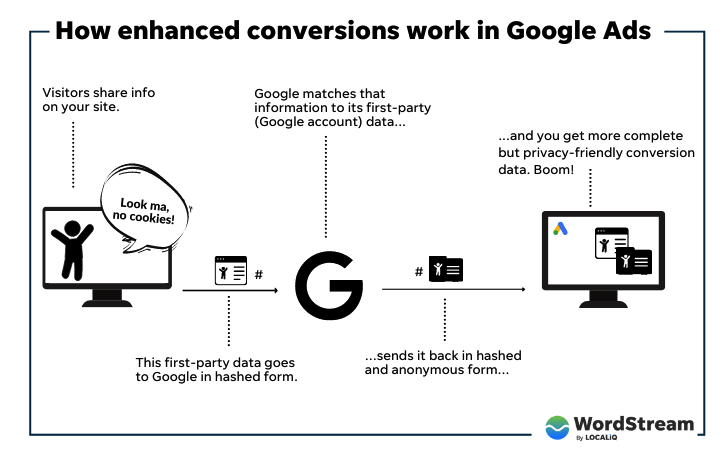
Boothe agreed, noting it may also involve working with third-party organizations that have expertise in privacy-compliant data management.
“Marketers will need to be proactive in finding solutions that balance the need for data with the importance of protecting consumers’ privacy,” he added.
Will we get a handle on the supply chain?
Inflation and supply chain shortages were the biggest culprits behind Google Ads cost per lead increasing in 2022. Here’s what experts predict on the supply chain front.
13. More businesses will adopt supply chain automation technology…
To protect against the supply chain shortages that plagued the holiday season, businesses can diversify their sourcing, which includes working more with local suppliers, and/or strengthen ties with existing vendors.
They can also implement multi-modal transportation and invest in analytics for greater supply chain visibility and to better anticipate and manage risk.
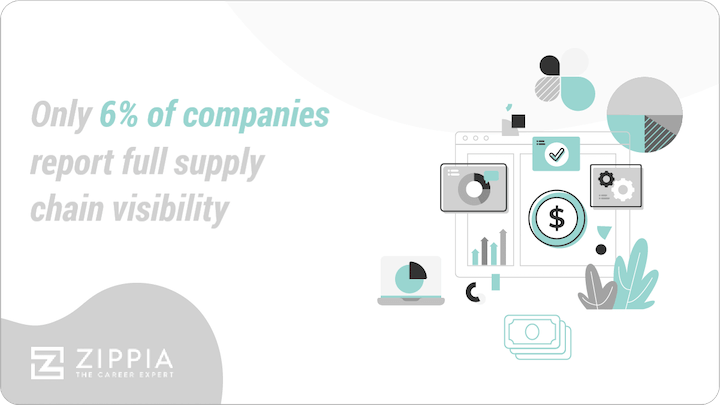
“[Supply chain automation technology] can help to expedite the movement of goods, reduce delays in the supply chain and increase efficiency,” Campbell said. “Automation technologies such as robotics, machine learning, big data analysis and artificial intelligence can enable businesses to identify and respond to supply chain disruptions.”
14. …and build prevention and contingency plans
In addition, building up inventory levels, implementing contingency plans, and looking for opportunities to increase efficiency and reduce costs can help mitigate bottlenecks.
“Some businesses may also be considering shifts in their operations, such as moving production to different locations or adopting new technologies, in an effort to reduce their reliance on certain suppliers or markets,” Boothe added.
Inventory optimization, which identifies when and where shortages may occur, is another tactic.
“Additionally, businesses may also look to build more robust safety nets, such as insurance policies and emergency funds, to protect them from unexpected economic changes,” Shee said.
Keep an eye on these 2023 marketing trends
We’ve covered a lot of trends, patterns, and perspectives in this post, on everything from AI content to supply chain automation. Here is the final list to sum up our top digital marketing trends and predictions for 2023:
- Some social platforms will imitate or partner with TikTok
- Others will distinguish themselves
- The advantages of AI content will abound
- But human copywriters need not panic
- A greater emphasis on equity & intersectionality in the DEI realm
- The use of metrics and KPIs for greater DEI accountability
- More positive attitudes toward automation
- Greater efficiency (but caution) in Google Ads
- Catering to Gen Z’s affinity for authenticity, transparency & accessibility
- Immersive experiences on social
- Increase of transparency in data practices
- Greater adoption of privacy-friendly tracking technology
- The need for automation technology remains
- Building of Supply chain prevention and contingency plans
The post These 14 Digital Marketing Trends Will Have the Biggest Influence in 2023 appeared first on WordStream.
* This article was originally published here
Digital Marketing Market Size to Surpass USD 1,189.5 Billion by 2033 | With a 11.22% CAGR - openPR.com
Digital Marketing Market Size to Surpass USD 1,189.5 Billion by 2033 | With a 11.22% CAGR openPR.com * This article was originally publi...
-
Did you know that 97% of people fail at making money online? The good news? You don’t have to be one of them. The difference between ...
-
Open Internet: Key Aspects and Importance for Advertisers Taboola.com * This article was originally published here Start making $300 pe...
-
Top 10 Website Marketing Strategies That Work in 2025 G2 Learning Hub * This article was originally published here Start making $300 pe...
